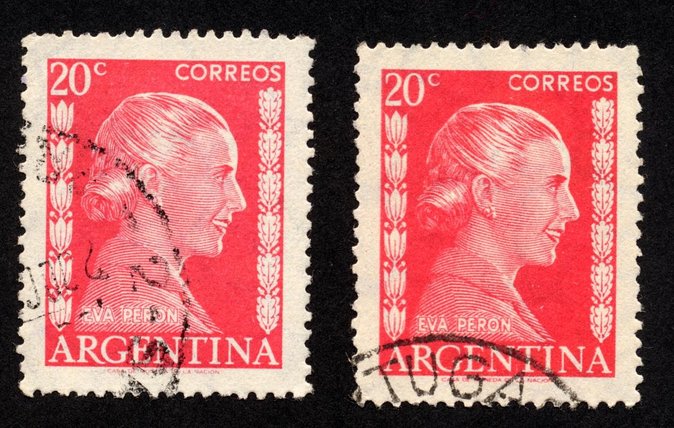The story of Juan Perón and Eva Duarte, better known as Evita, is one that has captivated historians and the public alike. Their partnership not only shaped Argentina’s political landscape but also left an indelible mark on the nation’s social fabric. As the driving forces behind the Peronist movement, Perón and Evita championed the rights of the working class, rallying the masses with their populist agenda. However, their legacy remains a subject of intense debate, with both ardent supporters and fierce critics weighing in on the complexities of Peronism. Unraveling the intricacies of this dynamic duo’s rise to power offers fascinating insights into Argentina’s turbulent past.
Key Points

-
The Peronist movement, led by Juan Perón and his wife Eva, rose to power in Argentina through a populist ideology focused on social and economic reforms.
-
Eva Perón, or "Evita," became a national icon and championed the rights of the working class, significantly aiding Perón’s political success and appeal.
-
Peronism’s "third position" sought a balance between capitalism and communism, implementing policies to improve the lives of the working class and the poor.
-
The Peronist regime faced accusations of authoritarianism, corruption, and economic instability, yet its populist appeal and nationalist ideals continued to influence Argentina’s political landscape.
-
Perón’s exile and eventual return to power in 1973 solidified Peronism’s enduring impact on Argentina, with its principles of social justice and economic nationalism remaining influential.
The Rise of Juan Perón

Juan Perón’s rise to power in Argentina was a complex and multifaceted process. As a military officer, he gained prominence during the 1943 coup and later became the Minister of Labor.
Perón’s populist policies, which appealed to the working class, and his marriage to the charismatic Eva Duarte, known as "Evita", propelled him to the presidency in 1946.
Perón’s government implemented social reforms, nationalized industries, and promoted the principles of Peronism, a unique blend of nationalist, populist, and social policies.
His authoritarian tendencies and suppression of opposition, however, soon led to growing tensions and ultimately his overthrow in a military coup in 1955.
You can also read our reviews of more tours and experiences in Buenos Aires.
Evita’s Influence and Legacy

Evita’s undeniable charisma and her unwavering devotion to the working-class Argentinians played a pivotal role in shaping her husband’s political success.
As First Lady, she became a national icon, championing the rights of the underprivileged and establishing social welfare programs that earned her the adoration of the masses.
Her untimely death at the age of 33 only served to cement her legacy as a passionate advocate for the Peronist movement.
Even today, Evita’s influence is felt in Argentina’s political landscape, with her image and ideals continuing to inspire generations of leaders and activists.
The Peronist Ideology in Action

The Peronist ideology, championed by Juan Perón and his wife Evita, found its practical application in the sweeping social and economic reforms enacted during their time in power.
Perón’s "third position" sought a middle ground between capitalism and communism, nationalizing key industries while expanding the welfare state.
Evita’s passionate advocacy for the "descamisados" – the shirtless masses – drove policies like free healthcare, housing assistance, and labor protections.
Though criticized by political opponents, these reforms dramatically improved the lives of Argentina’s working class, cementing the Peronists’ power and populist appeal.
The Peronist movement’s enduring legacy continues to shape Argentina’s political landscape.
Argentina’s Political Landscape During Peronism
Argentina’s political landscape underwent significant transformations during the Peronist era. Powered by the charismatic leadership of Juan Perón and his wife, Evita, the Peronist movement gained widespread support from the working class and the poor. This period was marked by a shift towards populism, with the government implementing social welfare programs and nationalizing key industries. The political landscape became increasingly polarized, with the Peronists facing opposition from the military, the upper class, and other political factions. The table below outlines some key aspects of Argentina’s political landscape during this tumultuous period.
| Aspect | Description |
|---|---|
| Populism | Perón’s government appealed to the masses, implementing social welfare programs. |
| Nationalism | The government sought to assert Argentina’s sovereignty and economic independence. |
| Polarization | The Peronists faced opposition from the military, the upper class, and other political groups. |
| Authoritarianism | Perón’s regime was accused of suppressing dissent and consolidating power. |
| Economic Reforms | The government nationalized key industries and implemented import-substitution industrialization. |
The Populist Appeal of Peronism
Harnessing the power of populism, the Peronist movement under Juan Perón and his wife Evita captivated the hearts and minds of Argentina’s working class and the poor.
Through a rhetoric that championed the rights of the "descamisados" (the shirtless ones), Perón and Evita positioned themselves as champions of the common people, promising economic justice and social welfare.
This populist appeal resonated deeply, allowing the Peronists to mobilize a vast base of support and consolidate their political dominance.
Controversies and Criticisms of Peronism

Despite the Peronist movement‘s populist appeal and its championing of the working class, it has also faced significant controversies and criticisms over the years.
Peronism has been accused of authoritarianism, with critics arguing that it concentrates power in the hands of the president. There have also been allegations of corruption, nepotism, and the suppression of opposition voices.
Plus, some have criticized the Peronist regime’s economic policies, which have at times led to high inflation, currency devaluation, and economic instability.
Despite these controversies, Peronism remains a powerful and influential political force in Argentina, with its supporters continuing to champion its populist and nationalist ideals.
Perón’s Exile and Return to Power
Juan Perón’s political fortunes took a dramatic turn in the late 1940s. Facing increasing opposition, he was ousted from power in 1955 and forced into exile.
For the next 18 years, Perón lived in Spain, maintaining his influence over the Peronist movement from afar. In 1973, with the Peronist party back in power, Perón returned to Argentina to a hero’s welcome.
He quickly reasserted his control, becoming president once again. However, his health declined, and he died in 1974, leaving his third wife, Isabel Martínez de Perón, to succeed him.
Her presidency was turbulent, and the Peronist movement faced continued instability and challenges in the years that followed.
The Enduring Impact of Peronism

Even after Juan Perón’s death, the Peronist movement and its influence continued to shape Argentine politics and society.
Peronism’s core principles – social justice, economic nationalism, and anti-imperialism – remained potent forces in the country’s political discourse.
Successive Peronist governments, though marked by periods of democratic backsliding, maintained a populist agenda that resonated with working-class Argentines.
The movement’s broad appeal and ability to reinvent itself ensured its endurance, with Peronist candidates often dominating presidential elections.
The enduring impact of Peronism is evident in its:
- Persistent electoral success
- Shaping of Argentina’s socioeconomic policies
- Influence on the country’s political landscape
Frequently Asked Questions
What Is the Tour’s Cancellation Policy?
The tour has a free cancellation policy up to 24 hours before the experience starts, giving customers the flexibility to change their plans without incurring any fees.
Are Meals Included in the Tour Price?
The tour price does not include meals. Meals are not listed as an inclusion in the overview provided. Customers will be responsible for covering the cost of any meals or refreshments during the tour.
Can Children Participate in the Tour?
The tour is open to participants of all ages, including children. The price is per person and does not include meals. Tickets to the Evita Peron museum are included in the tour.
Is the Tour Suitable for People With Disabilities?
The tour is suitable for people with disabilities. It’s wheelchair and stroller accessible, and service animals are allowed. The tour also operates near public transportation, making it easily accessible for those with mobility challenges.
Can the Tour Be Customized to Individual Preferences?
The tour can be customized to individual preferences. Customers can contact the tour provider to discuss any special needs or preferences they may have, and the provider will accommodate them to the best of their ability.
Recap
Peronism’s enduring impact on Argentina is undeniable. The partnership between Juan Perón and Eva Duarte, or "Evita," fueled the rise of this populist movement, which championed social justice and the empowerment of the working class. While Peronism has been marred by controversies, its lasting influence on the nation’s political landscape is a testament to the power of their shared vision and Evita’s charismatic leadership.
More Tour Reviews in Buenos Aires
Not for you? Here's more things to do in Buenos Aires we have recnetly reviewed
- 2 Best Canoe And Kayak Experiences In Buenos Aires
- 9 Best 2 Day Tours In Buenos Aires
- 6 Best BBQ Experiences In Buenos Aires
- 25 Best Dining Experiences In Buenos Aires
- 20 Best Full-Day Tours In Buenos Aires
- 2 Best 3 Day Tours In Buenos Aires
- 10 Best Sailing Experiences In Buenos Aires
- 19 Best Photography Experiences In Buenos Aires
- 5 Best Coffee Tours And Tastings In Buenos Aires
- 25 Best Dinner Tours In Buenos Aires
- 5 Best Craft Beer Tours And Tastings In Buenos Aires
- 25 Best Cruises And Boat Tours In Buenos Aires
